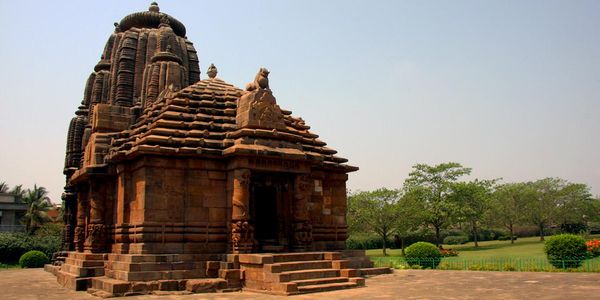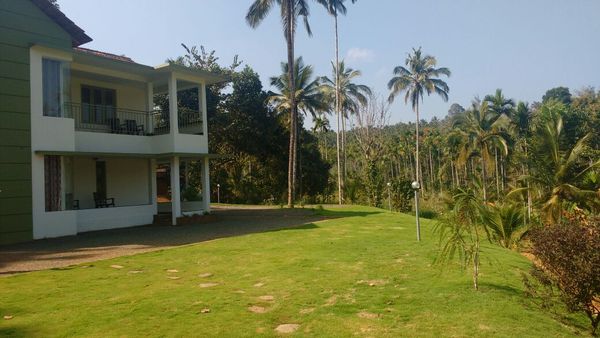Discovering the Splendor of Rajarani Temple Bhubaneswar, Odisha
 Vikram Singh
19 Dec, 2024
9 mins read
881
Vikram Singh
19 Dec, 2024
9 mins read
881

Bhubaneswar, the capital city of Odisha, is often referred to as the "Temple City of India" due to its rich collection of ancient temples. Among the many historical and architectural wonders in this city, the Rajarani Temple stands out as a prime example of Kalinga architecture and a beacon of Odisha’s cultural heritage. Known for its intricate carvings, distinctive sandstone, and historical significance, the Rajarani Temple Bhubaneswar is a must-visit destination for both pilgrims and history enthusiasts.
This article takes a deep dive into the Rajarani Temple, its fascinating history, architectural beauty, spiritual significance, and how it continues to captivate visitors from all around the world.
A Brief Overview of the Rajarani Temple
The Rajarani Temple Bhubaneswar Odisha is a striking structure located in the heart of Bhubaneswar, showcasing the brilliance of ancient Indian architecture. The temple was constructed during the 11th century under the rule of the Somavamsi dynasty, and though its exact date of construction is unknown, it is widely believed to have been completed around 1050 AD.
The temple’s name, "Rajarani," comes from the type of stone used for its construction—Rajarani stones—a unique red and yellow sandstone that gives the temple its distinct golden hue at sunset. The name "Rajarani" translates to "King's queen," which may be a reference to the nobility associated with the region during that era.
Unlike many temples dedicated to specific deities, the Rajarani Temple does not house an idol or image of a god or goddess. Instead, it is believed to have been used as a place of worship and rituals. Despite its lack of a primary deity, the temple’s architectural and artistic beauty makes it a significant place for pilgrims and tourists alike.
Architectural Beauty of the Rajarani Temple
The Rajarani Temple Bhubaneswar is an excellent example of the Kalinga style of architecture, which is known for its towering spires, curvilinear temple structures, and finely detailed sculptures. The temple features a Rekha Deula style of architecture, which is a hallmark of many temples built in Odisha during the medieval period.
Design and Structure
The sanctum of the temple, where the main deity is usually housed, is placed at the center of the temple. The temple rises in a classical Shikhara-style, a high tower that tapers as it ascends, reaching a height of approximately 20 meters. The tower is surrounded by intricate carvings of divine beings, celestial figures, and scenes from mythology.
The Jagamohana (porch) of the temple is equally remarkable, with finely chiseled images of gods, goddesses, and mythological creatures decorating the walls. These carvings highlight the unparalleled craftsmanship of ancient artisans, showcasing their devotion to both religion and art.
What truly sets the Rajarani Temple Bhubaneswar apart is its sculpture work. The temple’s outer walls are adorned with detailed carvings of gods and goddesses from the Hindu pantheon. Among these, the most prominent figures are those of Lord Vishnu, Lord Shiva, and Goddess Parvati, alongside many celestial nymphs, dancers, and scenes from Hindu mythology. The temple also features numerous erotic sculptures, which are often found in ancient temples of India and are believed to symbolize the divine union of male and female energies.
One of the striking features of the Rajarani Temple is the fact that it was constructed without a central deity, making it a non-functional temple in the traditional sense. Nevertheless, it remains a significant heritage site, not just for its religious meaning, but also as a testament to the architectural and artistic prowess of its creators.
Significance and Cultural Impact of Rajarani Temple
Though the Rajarani Temple Bhubaneswar Odisha is not primarily associated with a specific deity, it holds immense cultural and spiritual significance. The temple is seen as a masterpiece of Indian architecture and artistry, demonstrating the sophistication of ancient temple building in Odisha.
The Rajarani Temple also represents the deep connection between art and spirituality in ancient Indian culture. Its detailed carvings and sculptures serve not only as an expression of divine devotion but also as a means of preserving and celebrating the region’s artistic heritage. The erotic sculptures, in particular, are often studied by historians and art lovers for their symbolism, representing fertility, the cycle of life, and the divine relationship between male and female energies.
Today, the Rajarani Temple remains an important religious and cultural symbol for the people of Odisha. The temple stands as a silent observer of the changing times, offering a glimpse into the past and showcasing the rich spiritual and artistic legacy of Odisha.
Visiting the Rajarani Temple
The Rajarani Temple is one of Bhubaneswar's key tourist attractions, with visitors coming from all over the world to marvel at its architectural grandeur and historical significance. Whether you are a devotee seeking solace, a history enthusiast looking to explore Odisha’s cultural heritage, or simply a curious traveller, the Rajarani Temple Bhubaneswar offers something for everyone.
Timings for Rajarani Temple
The temple is open to visitors every day, though the best times to visit are early mornings and late afternoons when the light brings out the temple’s intricate carvings and creates a golden hue on the sandstone. Here are the general timings:
- Morning Timings: 6:00 AM to 12:00 PM
- Afternoon Timings: Closed
- Evening Timings: 3:00 PM to 6:00 PM
It is recommended to plan your visit during these hours to make the most of your time exploring the temple’s captivating sculptures and architecture.
How to Reach Rajarani Temple
The Rajarani Temple is located just a few kilometres from Bhubaneswar’s city centre. The temple is easily accessible by local taxis, auto-rickshaws, or private vehicles. Bhubaneswar is well connected by road, rail, and air, making it easy for travellers to reach the temple from any part of India.
Rajarani Temple Images
The Rajarani Temple Bhubaneswar is a photographer’s paradise, with its stunning sculptures, detailed carvings, and unique sandstone hues. Visitors often take home Rajarani Temple images capturing the intricate artwork, the grandeur of the temple’s design, and the peaceful atmosphere that surrounds it. The images often focus on the sculptures, the temple’s high spire, and the temple in the soft, golden light of early morning or evening.
Conclusion
The Rajarani Temple Bhubaneswar is a shining example of ancient Indian architecture, known for its exquisite craftsmanship, rich history, and spiritual significance. Though it does not house a deity like many other temples, it remains an important cultural landmark, representing Odisha’s glorious past and vibrant heritage.
Whether you are a pilgrim, a tourist, or an art lover, visiting the Rajarani Temple Bhubaneswar Odisha is an experience that will leave you in awe of the architectural genius and divine beauty that defines this majestic temple. From its stunning carvings to its serene surroundings, the Rajarani Temple offers a unique opportunity to connect with the spiritual and cultural essence of ancient India.
Written By:
Vikram Singh



Hotels at your convenience
Now choose your stay according to your preference. From finding a place for your dream destination or a mere weekend getaway to business accommodations or brief stay, we have got you covered. Explore hotels as per your mood.


